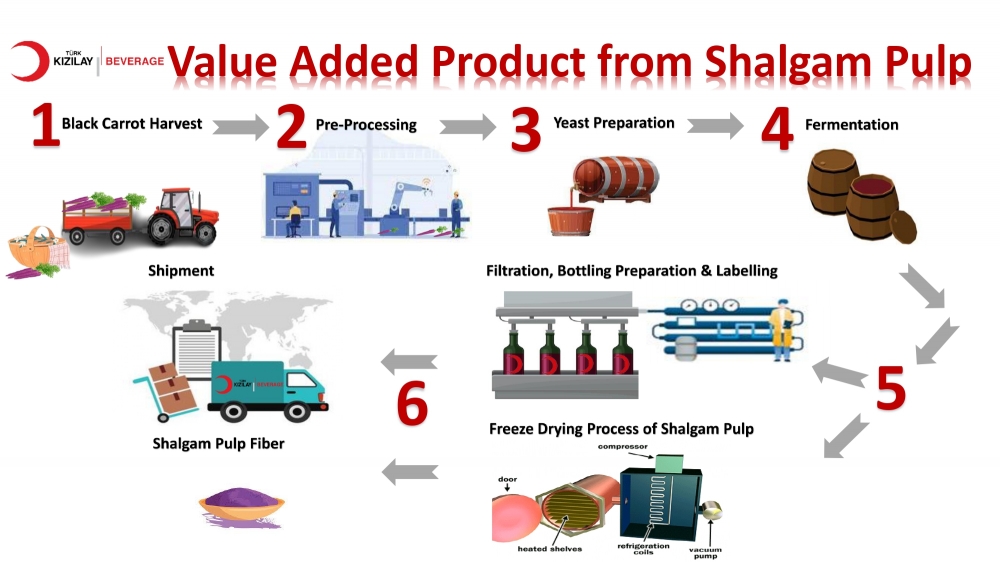JOURNAL 3041
Records of Agricultural and Food Chemistry
Year: 2024 Issue: 3 Special Issue: Abstracts 3rd. TCS, International Food Chemistry Congress February 29-March 03,2024 Antalya Türkiye
p.17 - 17
Viewed 1452 times.
GRAPHICAL ABSTRACT

ABSTRACT
Fermentation has been utilized by humans since the early days of food storage, with fermented herbal products gaining attention for their nutritional benefits. Among these products is shalgam, a traditional Turkish fermented beverage, also known as turnip or shalgam juice. Shalgam is produced using raw materials like black carrot, turnip, bulgur flour, yeast, salt, and water. The traditional method involves a two-stage process: dough fermentation, where lactic acid bacteria proliferate, and the main fermentation, resulting in the formation of the beverage. Wooden or modern tanks are used for fermentation, and the process takes 3-10 days. Alternatively, direct production skips the dough fermentation stage and directly ferments the ingredients. The final product is filtered, bottled, and stored in cold conditions. The pulp formed after turnip production has the potential to be used as a valuable organic matter in animal feed production, soil fertilization, as an energy source in bioenergy production, or as an extra fiber and nutrient source in some products in the food industry. Carrot waste, constituting up to 50% of raw material post-industry processing, is typically used for animal feed or discarded, adversely impacting the environment. Within the framework of the Farm to Fork Strategy, emphasis is placed on sustainable food consumption and the prevention of food loss and waste. In recent times, numerous entities in developed nations have initiated endeavors aimed at mitigating the economic, environmental, and social repercussions associated with the problem of food waste. According to recent research, the importance of food loss and food waste has increased over the last few decades. In this context, food processing residues, considered abundant, inexpensive, and sustainable sources, have garnered attention. However, this waste contains substantial residual compounds associated with nutritional and health benefits, including antioxidant properties linked to preventing cardiovascular diseases, cancer, diabetes, gastrointestinal issues, and ocular diseases. The recovery of these valuable bioactive compounds from carrot waste presents an opportunity to generate functional ingredients, enabling the incorporation of purple carrot waste into diverse food products with positive effects on human health. This comprehensive project explores the nutritional composition of purple carrot wastes, highlighting identified bioactive compounds, their applications in various food products and beverages [1–4].
KEYWORDS- Shalgam pulp
- food waste
- prebiotic